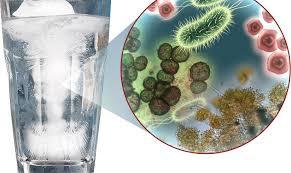Bacteria are the most numerous organisms on the planet. There are literally millions of different types of bacteria. They are one-celled organisms and are present in everything from water to food, and on objects we touch every day. What’s ironic about bacteria is that they are among the smallest organisms on earth, and yet, they can cause some of the greatest problems.
We come in contact with millions of bacteria every day, and nearly all are harmless. However, some types of bacteria are very harmful, especially those from sewage, even when present in small amounts.
Bacteria are the cause of some serious disease, such as cholera, that plagued villages and towns centuries ago. Thanks to modern sanitation methods, many of these diseases have been greatly reduced or eliminated. Unfortunately, less developed countries that do not have effective sanitation systems are still affected by diseases caused by bacteria and viruses from sewage.
Most people develop an immunity to common bacteria at any early age. However, people with damaged or undeveloped immune systems, such as newborns, the elderly, AIDS patients, and cancer patients undergoing chemotherapy, are less resistant to disease and are more apt to become sick as a result of bacterial infections.
How does bacteria get into our water?
Bacteria found in drinking water come from several sources. The most common source is the soil surrounding the water system. Once inside the system, these soil bacteria colonize every available surface, where they grow and then continually slough off into the water thereafter.
In addition, bacteria can get into water during construction and repair of water lines, and through cracks in pipes when water pressure fluctuates.
Municipal water systems check for harmful bacteria levels on a regular basis. Since it is impractical to test for all bacteria, they test instead for the main sewage organism, called E. coli. If E. coli is present in water, it means that harmful sewage contamination has occurred.
Larger water municipalities conduct this test many times each day. Bacteria can be described as either pathogenic or non-pathogenic, meaning whether or not they can cause disease. Pathogenic bacteria can overcome the body’s natural defenses and invade healthy tissues. In addition, “opportunistic” or “secondary” pathogens are those that can cause an infection when an unusual opportunity, such as an open wound or suppressed immune system, presents itself. Very few types of bacteria are pathogenic.
Following are some types of pathogenic bacteria found in drinking water:
- Salmonella – the cause of most food poisoning.
- Vibrio organisms – cause of human cholera, an extremely serious disease which can be rapidly fatal if not treated quickly and carefully. Fortunately, sanitation and disinfection practices have been so effective that there has been no water-borne cholera in Canada for at least 50 years.
- Yesinia enterocoliticia – common in cold, clear, mountain streams and causes mild diarrhea.
- Campylobacter bacteria – lives in the stomach and intestines of humans and animals. One type causes stomach ulcers.
Although not likely to cause illness, non-pathogenic bacteria can cause other problems in drinking water.
- Iron Bacteria – found in particles or iron, common in soil and surface water. They are a major cause of pipe corrosion.
- Sulfur Bacteria – cause the rotten-egg smell sometimes present in drinking water. Sulfur bacteria can cause severe corrosion quickly. They are commonly found in stagnant or unused water mains and in dead-end mains.
- Actinomycetes – resemble mold and produce an offensive “musty” taste and odor.
A point-of-use (POU) water filtration system Certified Class I for Particulate Reduction by NSF International is a simple and cost-effective way to remove particles ½ micron in size and larger from your drinking water. Most bacteria are larger than ½ micron. “Bacteria Reduction” would not be a valid claim because they can grow back, but an efficient sub-micron filter will remove most bacteria while the water is flowing.
Some people have been concerned that growth of common soil bacteria on water system surfaces may be a health hazard – especially on the surfaces of POU filter media, such as activated carbon.
Recent research suggests the opposite, however. It now is believed that normal growth of these common organisms provides an important health benefit by inhibiting the attachment and growth of any true pathogens that may occasionally get into the system.
Typically the size of a household fire extinguisher, POU systems designed for residential use are installed under the kitchen sink and plumbed to the cold water line. The filtered water is served through a dedicated faucet for drinking and cooking. Depending on the model, POU filtration systems are capable of correcting most water problems, including the removal of parasitic cysts, the reduction of chlorine, chloramines, lead, pesticides, Trihalomethanes (THMs), volatile organic chemicals (VOC's), and asbestos.





